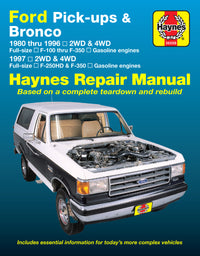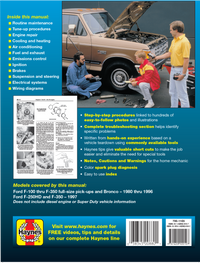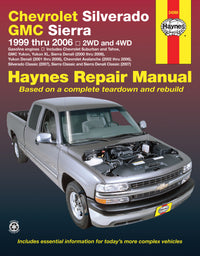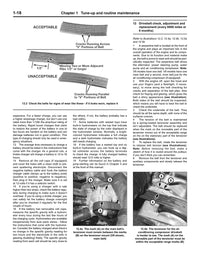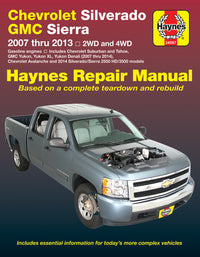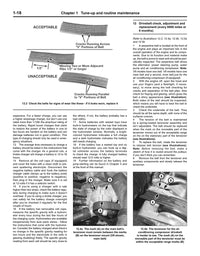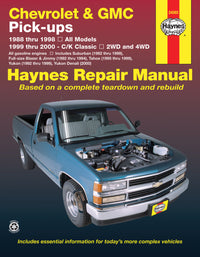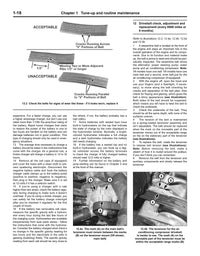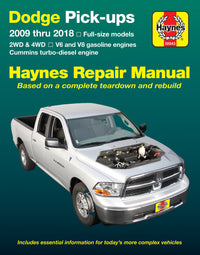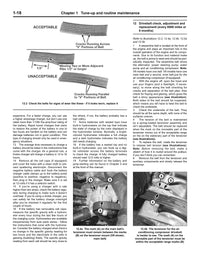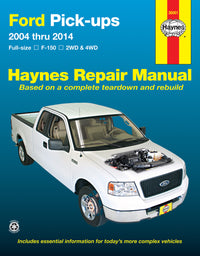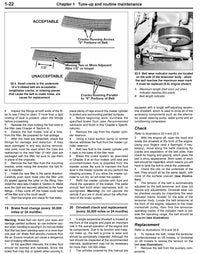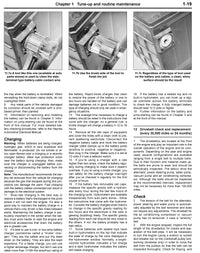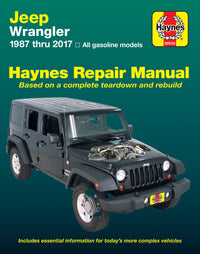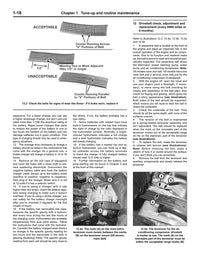Buying a used car may not be as stressful as buying a house, but it’s important you put plenty of thought into the process before you hand over the cash. There are a few key things to know before you even start your search – once you’ve ticked everything off on the used car checklist you’ll be a much more confident buyer.
Why buy a used car?
The biggest advantage over a new car is money: new cars cost a lot, and the moment you drive them off the lot they start depreciating like there’s no tomorrow. So, even if you’re using credit to help ease the purchase price pain, your dream new purchase will have lost around half of its sticker price and maybe more.
Buy a second-hand car and the first (and subsequent) owners will have taken that depreciation hit, enabling you to scoop up a bargain. Yes, it will continue to depreciate, but the rate at which it loses value decreases as time passes, especially after the first three years.
How much do you want to spend on a used car?
The first step on your used-car journey is to work out your budget. If you’re paying from your savings, how much do you want to spend on a used car? If you’re getting credit, how much can you afford?
Are you getting a regular bank loan or using the dealer’s finance? Compare the interest rates of various deals and get a summary of how much you’ll pay in total; you may want to pay off the loan early – are there any penalties for doing this? It might be boring but read through all of the small print and underline anything you don’t understand – get a second opinion from a friend or family member, or ask the loan provider.
Budgeting for a used car
That budget will give you the title, but don’t forget about the running costs, such as insurance and fuel. Hopefully, you’ll be using your Haynes manual to carry out the routine maintenance yourself, which will save you hundreds of dollars in labor charges over several years. But you should also think about potential bills for unforeseen repairs, such as punctured tires or a broken windshield.
Some manufacturers (Hyundai, Genesis, Kia) provide new car warranties of up to five years – if your used car is newer than that you may be able to get an issue fixed for free by a main dealer, but bear in mind that wear and tear issues (such as worn brake pads and clutches) won’t be covered. These are also known as certified pre-owned vehicles, as sold by franchised dealers – and even if their original manufacturer warranty has expired, they’ll be sold with a factory-backed limited warranty.

Now you need to work out what sort of used car you need. Here’s a list of bodystyles:
- Convertible
- Coupe
- Hatchback
- Sedan
- SUV
- Truck
- Van
- Wagon
Convertibles and coupes tend to be the least practical because of their sleek styling, with little (if any) room in the back for passengers and small trunks. But many are fun to drive and could be ideal if it’s just two of you or you intend to use it as a weekend car.
Hatchbacks, sedans and wagons can work well as commuter cars but also as family cars, depending on their size, thanks to rear seats and larger trunks.
SUVs and trucks are the most popular body styles because of their practicality and perceived greater safety. They also have larger engines so are more expensive to run.
If you are buying with the family in mind, it’s probably best to take them along with you when you view the vehicle, to make sure everyone fits and is happy – and that includes the dog!
Where to find a used car
You’re in the market for a used car. But where to look? It used to be that you’d look through local newspapers, or regional car-sales magazines, but no more. There are myriad options out there for the keen car hunter.

1. Online
As with everything else in the world, the internet has transformed how people search for a car. Most good online car-sales listings sites, such as Autotrader, Carvana or Edmunds offer the ability to tailor your search down to specific colour, maximum mileage, trim level, budget and search radius. This also applies to sites such as Ebay or Facebook Marketplace.
It means that even though there are millions of cars for sale online at any one time, you can narrow down your search really quickly – and give each car a thorough once-over using the online images before you make any kind of commitment to go and see it in person.
2. Lots
Yes, the online world gives you access to a wide variety of machines, and owners eager to take possession of your hard-earned dollars, but searching and making viewing appointments all takes time. As does the travel to get there and back.
That’s why there’s still something to be said for simply having a look around the used-car lots in your local area, especially if you need a car sooner rather than later.
The advantage of looking around local lots is that you can employ an ‘all at once’ approach, by checking out the car in person, studying all its faults, inspecting the paperwork, and negotiating on the price.
The downside is choice, because you’ve just got to look at what’s available, so won’t be able to narrow down the search for the perfect machine.

3. Auctions (+ gov auctions)
Why not have a look at US Government online vehicle auctions? The US Government auctions thousands of vehicles each year, some of which have been government-owned, and others that have been obtained as part of criminal proceedings.
There are four main types of auctions that you can look through:
- GSA fleet vehicle sales: government-owned vehicles that are in good condition and ready to drive
- GSA Auctions: government-owned excess vehicles
- US Treasury auctions: these are vehicles that have been forfeited by owners convicted of violations of Treasury law
- US Marshals Service seized assets auctions: these are vehicles seized by Department of Justice agencies and other federal agencies
The first three of these categories usually comprise vehicles that are in good or fair condition, and which you can reasonably expect plenty of years of running from.
However, the seized assets category is more likely to contain vehicles that have been seized during criminal proceedings and that may require repairs. Still, you should get them for a bargain price in the first place, so invest some of the money you’ve saved in a Haynes Manual for the vehicle and you could use our expertise and experience to have it back on the road before you can say: “freeze!”.
Things to check when looking at a used car
So, you’ve finally decided to stop swiping through the online adverts, and have found what you believe to be The One. The next step is to actually get out there and see the car in the metal, to see if the online ad is actually telling you the truth.
And to get to the bottom of that, there are five main things you need to check over:

1. Bodywork
First impressions count, so be wary of any car that has shabby bodywork
Bodywork holds the secrets to a car’s past. Dents and rust are obviously something to be hugely cautious of because it shows that the owner hasn’t really given the car much care – and if they didn’t care about how the car looks, how much did they care about the mechanicals – the bits that aren’t on show?
On the surface, attempts to fix damage at home – using a touch-up pen for example – can be unsightly, but they are actually a good sign. The owner cared, made an effort. And if it’s an old car, can you blame them for not wanting to spend $100s at the shop to fix a scratch?
Then there are the panels themselves. Do they line up? If not, the car could have been repaired poorly after an accident. Also, look at the paint. Is it full of swirls and scratches? Has it spent life going through car washes, rather than at the hands of an owner with a bucket of decent shampoo?

2. Tires
Tires are not only the one bit of the car that touches the road, they’re also a window into the car’s history
Tires are the holders of all your car’s secrets. They are the tea leaves at the bottom of the cup, the lines of the car’s palm, the crystal ball – and they can tell you exactly how the car you’re looking at has been treated in the past.
First, tires that are all the same brand is a good start. Four matching budget tires suggests the previous owner wanted to have matching rubber because that’s better.
Odd tires on each corner means someone was replacing as they went. Four mismatched budget tires tell you they were running the car on a shoestring and constantly buying cheap rubber.
The wear on the tires should be even. If it’s not, unevenly worn tires usually indicate the tires were never rotated. If the seller skipped that, what other service did they not do?
Is the alignment out and if so, why? Are the tire walls damaged from clunking into curbs? If so, the past owner wasn’t careful.
So use this knowledge to your advantage – worn tires make a great bargaining tool, and are pretty easy to replace.

3. Mechanicals
Make sure the bits you don’t usually see aren’t hiding some expensive gremlins
Listen to the engine when the hood is open. Does it rev freely and keenly, or is it hesitant? Can you hear any metallic grumbles that could spell internal problems, or can you hear any faint hissing, which may suggest something wrong with the intake system?
Next get down onto the ground and check underneath. How does the exhaust system look? If it’s leaking fumes (and noise) then it’ll likely need to be replaced.
While you’re down there, check out the underside of the car. Rust isn’t quite the problem it used to be, but cars in states with harsh winters (and road salt) still suffer from corrosion – and it can be costly to fix. Then at least you’ll know whether to use it to knock some money off or walk away altogether.
And if you’re already on your knees, it makes sense to check out the car’s suspension, because a broken spring or weeping shock suggests the car has either been driven hard or the owner has skipped fixing it. Either way, it’s a bad sign.

4. Interior
The interior of a car is where you spend all of your time, so make sure it is somewhere you want to hang out
You need to check out the interior for all the usual stuff, such as rips in fabric or cracks in plastic, but also for signs of wear.
Look at the steering wheel, the pedals and the carpet just below the pedals. If the car has 150k on the clock, then you’d expect them to be worn, but if it has just 50,000 miles showing, you’d be right to be suspicious. Has someone rolled back the odometer to make it look less used than it actually is?
The same applies to the seats. Does the wear on display tally with the mileage? If you’re not sure, have a look online for other cars for sale with roughly the same mileage. And of course, stains and burns are clear signs that someone really didn’t really care about the vehicle.
Check that all of the features work: do all of the windows go down and up; does the air-con blow cold and does the heater heat; do the heated seats/electric seat motors work; does the radio/CD work; do the electric mirrors move? Don’t miss anything.

5. Paperwork
Every car has paperwork, and it pays to make sure that it’s all up to date before you buy
You must study the paperwork in detail. Does the car have a full service history? Where were the services done? If they were all at the same workshop, great. If numerous shops have worked on it, you have to ask why.
Using a vehicle checker such as Carfax or VIN History USA, you can see when the car changed hands, and if the different servicing workshops in the history line up with ownership changes, fair enough. If it’s a one or two owner car though, and the car has been to every garage, you have to wonder why? This smacks of an owner shopping around for the cheapest work.
PRO TIPS
Even if you’re going to look at a car on the shortest day of the year in the depths of winter, make sure you view it in daylight. Darkness and artificial light are adept at covering up differences in paint shades, or misaligned panels.
This also applies to rain. Never view a car if it’s covered in raindrops, because these will disguise any paintwork flaws, and can even hide chips in the windshield.
If you’re new to the world of DIY mechanics, and aren’t entirely sure about what to look for, it’s wise to take along a knowledgeable friend to give you a second opinion. A second pair of eyes is likely to spot anything you’ve missed, and a good friend could also dissuade you from making a bad decision if you get ‘caught up in the moment’. This also applies even if you have decent car knowledge – you could still miss something vital that your friend picks up.
How to test drive a used car
The test drive is when you start to work out if you actually like the car
Without exception, you should test-drive any car you’re looking to buy, but how you go about the test drive varies according to how long you’re able to spend with the car. Some places will offer you only five or 10 minutes, whereas others are happy for you to undertake a longer drive. So, you need to have your ducks in a row long before you even turn the key.
First things first, when you go to see the car, put your hand on the hood. Is it warm? If so, why? Has the dealer had it running a bid to warm it up and hide any cold-start noises? Ask the question.
Next up – can you get comfortable? Try to get yourself into your ideal driving position. Was it easy to move the seat, steering wheel and mirrors? This can be easier if the car you’re looking at has electric adjustment for the seats and wheel. But the examination doesn’t stop there. How comfortable are the seats themselves? Do they have any uncomfortable lumps and bumps? Are the cushions still supportive? Does any adjustable lumbar support work as it should? If you can’t get comfortable sitting on a used-car lot, just think how achy you’d be after a four-hour drive.
Once you’re settled, it’s time to work out if the rest of the interior works for you. Are the controls easy enough to reach, and simple enough to operate? Make sure you try out the touchscreen, too, to make sure it responds as you expect.
If you regularly carry around loads of sports gear or camping kit, take some of it along with you, to make sure that the car’s practicality is up to the job of transporting your leisure time.
Finally, before you set off, listen to the engine when the hood is open. Does it rev freely and keenly, or is it hesitant? Can you hear any metallic grumbles that could spell internal problems, or can you hear any faint hissing, which may suggest there is something wrong with the intake system?

The short test drive
You need to be on your game as soon as you start the engine. Does the clutch engage smoothly? Was it easy to select first gear? If it’s an auto, did it go into Drive with no jerkiness?
Make sure the brakes release as they should (and that they work properly when you want to stop!). Then check that you can see out of the car properly, and that there are no blind spots that would affect your ability to drive it safely on a daily basis.
On the road, you want smooth power delivery, a crisp and easy stick shift or smooth auto, you want the car to drive straight when you loosen your grip on the steering wheel and you want the car to stop in a straight line when you hit the brakes.
Lugging the engine in a high gear, then giving it a lot of gas without shifting is a good test of the clutch and whether it is going to slip under stress.
Feel for any untoward vibrations, which could be the sign of worn suspension, damaged tires or weary steering.
And listen carefully for any whines, groans or clunks that indicate something untoward underneath.
Remember to try the dashboard controls and touchscreen while driving, because being able to quickly access certain settings when you’re on the road is essential. If the touchscreen is old, not very responsive, or needs an update, either walk away or use it to reduce the price.
And finally, make sure the lights, wipers, windscreen washers and horn all work.
The long test drive
Most used car salespeople will have worked out a good route around their lot, but don’t be afraid to take the car farther afield, to do the sort of driving that you’ll do each day.
For a start, don’t just stick to urban roads – try to cover multi-lane highways, two-laners and bumpy backroads if possible. That way you’ll know if the car generates an annoying whistle at cruising speeds, or if the wheel starts to wobble above 50mph.
And don’t be afraid to push the car (safely). Rev the engine out in a couple of gears, and hit the brakes hard to make sure the car stops as quickly as you want it to (and in a straight line). You want to know what the car will do in an emergency.
Does it go round corners, or does it wallow and float through the turns? You need to know. The last thing you want is for the kids to get seasick on a journey.
PRO TIP
Don’t switch off when you get back to the lot, either, because this is your opportunity to work out how easy the car is to park. Do any parking sensors operate as they should, and if the car has a self-parking system, make sure it works without scraping wheels off curbs, or nudging into other vehicles.

Negotiate the price
With a test drive out of the way and everything else looking good, now is the time to talk about the price. You’re probably feeling quite excited and are willing to pay the full sticker price. Don’t.
Before you view the car, do a bit of online research and bring up a list of cheaper same-spec, same-year models with roughly the same mileage, on sale from private sellers or dealers. Print out two or three of the cheapest ones and take them with you, and point them out to the seller. Tell them that if they match that price you’ll pay a deposit right now (which will make you sound like a serious buyer).
If they won’t match that price, ask them how close they can get. Ideally, you don’t want to pay any more than half the price difference.
If they won’t budge on price at all, you have to be prepared to walk away. It can be hard to do that after you’ve spent time researching and looking over a vehicle, but you have to remember that there are plenty of others out there – it’ll just take a bit more time and maybe more travelling to find it.

Should you get the car inspected?
If you’re a Haynes manual owner, you’ll already have some automotive experience, and probably know your way around a vehicle’s key components. In which case you’ve already carried out the mechanical checks shown above and are confident enough not to require the help of a professional.
But if not, ask the seller if they wouldn’t mind if you have the car inspected. This should be done on the day you view it or after you pay the deposit – but not after you’ve paid the full price. A mechanic will charge $100-$200 for an inspection report.
If you’re having the vehicle inspected at the seller’s premises, a mechanic is going to require an inspection pit or a hydraulic lift to be able to access the underside of the vehicle – things that are unlikely to be available if you’re buying from a private seller. But a dealer should be happy to allow the use of their facilities for that.
Alternatively, you could arrange to drive it to the mechanic’s workshop and have it inspected there, but that could be tricky, logistically, and a private seller is likely to want to accompany you, if they even agree to that.
PRO TIP
Be wary if the seller won’t allow you to have it inspected, even at their premises – they could be trying to hide something significant.

Time to pay up
Once you’ve poked, prodded, driven and negotiated over the car, and decided that it’s the one for you, then you approach the thorny problem of paying for it and transferring ownership.
Well, the key thing to note is that the phrase ‘cash is king’ no longer applies. In fact, cash is one of the least safe ways to purchase a car. If you’re buying privately, it makes no sense to be driving around with a huge number of bills in your pocket, and turning up at a stranger’s house with it. Just think – if you hand over the cash at a stranger’s house, how do you prove that you’ve bought the car legally? Do not pay with cash.
Instead, you could pay with a personal check or a cashier’s check from the bank, although you can only get a check for the correct amount AFTER you’ve negotiated on the price, which slows everything down.
You can also pay by card – either by chip and pin or contactlessly – but the easiest and safest way to pay for a car is using a bank transfer using your bank’s app. That way you have a record of the transfer, the seller gets the money immediately, and there’s no risk of being robbed for the cash.
Sort out the paperwork
Once the drives are done, negotiations are complete, and the money transferred, you need to sort out all the relevant paperwork for the vehicle.
These are the four main pieces of paperwork you need:
1. Bill of Sale
This is, in effect, a receipt that records the transfer of ownership from the seller to the buyer. To be effective, it should include the purchase price, vehicle identification number (VIN), date of sale, and signatures of both parties.
2. Title Certificate
This is also known as the pink slip, and is proof that you own the vehicle. You need to make sure you have the correct pink slip, because these can vary from state to state, and can include salvage titles, clean titles, or rebuilt titles.
3. Odometer Disclosure Statement
The law demands that the vehicle’s odometer reading is disclosed when the car is sold. This is aimed at reducing the possibility of the odometer being rolled back fraudulently.
4. Vehicle Inspection Report
You need to know the law in the state you’re buying the car in, because some demand a vehicle inspection. Under this, the car’s safety and emissions are checked before the registration transfer can be carried out.
Your rights if things go wrong
Things go wrong. It’s a fact of life, so you need to know your rights should something be wrong with the pre-owned car you’ve just bought.
1. Car Must Meet Basic Quality Standards
The car should be entirely roadworthy and have no big defects. A car that doesn’t comply with basic quality expectations can be unsafe. Avoid this by requesting a pre-purchase inspection report.
2. Cooling-Off Period after a Private Purchase
If you’ve bought a car from a private seller, you have the right to a cooling-off period. Within a specified period, you can change your mind and return the vehicle if it doesn't live up to expectations.
However, this doesn’t apply everywhere, so make sure you check local laws.
3. Right to a Warranty on the Vehicle's Condition
Many used cars are supplied with a limited warranty covering certain repairs and issues. Make sure you understand exactly what is covered before you pay up, because warranties can vary widely, covering anything from major engine repairs to minor electrical issues. Knowing what’s included can save you from unexpected repair costs.
4. Right to Reject the Vehicle and Get a Full Refund
If you get the vehicle home and find that it’s faulty or its condition has been misrepresented, you can reject it.
To do so, you should keep a note of any issues promptly and let the seller know immediately. Also, keep a record of all communication with the seller.

Used vehicle FAQs
Q How can I find out if the car has been recalled?
A Just check out the National Highway Traffic Safety Administration website (www.safercar.gov), which lists vehicles that are subject to safety recalls that have yet to be carried out. Just enter the vehicle’s VIN.
Q How do I know if a car has been declared as salvage?
A Just go to the National Insurance Crime Bureau’s website (www.nicb.org) and enter the VIN number, and it’ll tell you if the vehicle has been flood damaged, has been stolen but unrecovered, or otherwise declared as salvage.
Q How can I find out how much a car is worth?
A There are numerous websites with information about the value and pricing of new and used vehicles. These include Edmunds.com and Kelley Blue Book.
Q What do I do if I can’t make car payments?
A Whatever you do, don’t bury your head in the sand. Contact your lender right away. The good news is that many will work with you if they think you’ll be able to resume paying soon.
Also, see if you can refinance your loan. This could make sense if a lower interest rate or longer loan could make your car payment doable.
Q Can I afford it?
A There’s an easy way to find out – before you begin to look for a car, shop around for the finance. By getting pre-approved for financing, you’ll know exactly how much you can borrow, and what you’ll pay each month.
Q Is mileage that important?
A Not so much these days. Condition is more important than mileage. After all, a car with a high mileage early in its life is likely to have covered those miles on interstates and freeways, which are the easiest types of miles a car can do. Conversely, a car with a low mileage could have done all those miles in stop-start city traffic, which strains the brakes, steering, suspension and transmission. That’s why condition is more important than the odometer reading.
Q Do I need to insure the car?
A In the past, insurance wasn’t compulsory, but now 49 out of the 50 US states demand that you have valid car insurance. If you don’t have it and get stopped by the law, you’ll face a fine at minimum, with the potential for jail time, too.
Q What is an ‘as is’ sale?
A This means you’re buying the car as it is, and the dealer won’t pay for any subsequent problems or repairs. If the sale is “as is”, make sure any verbal promises (including promises to repair the car or cancel the sale if you’re not satisfied) are written down, otherwise, you could struggle to get the dealer to pay out.


